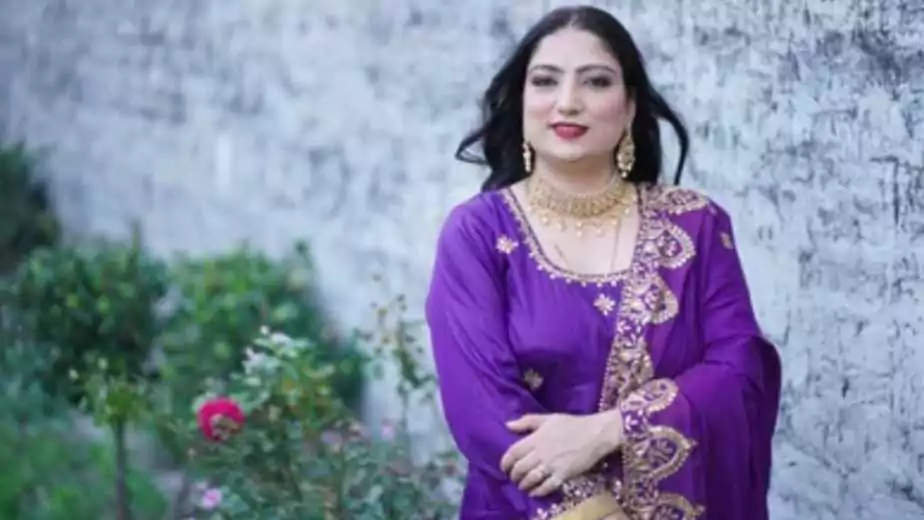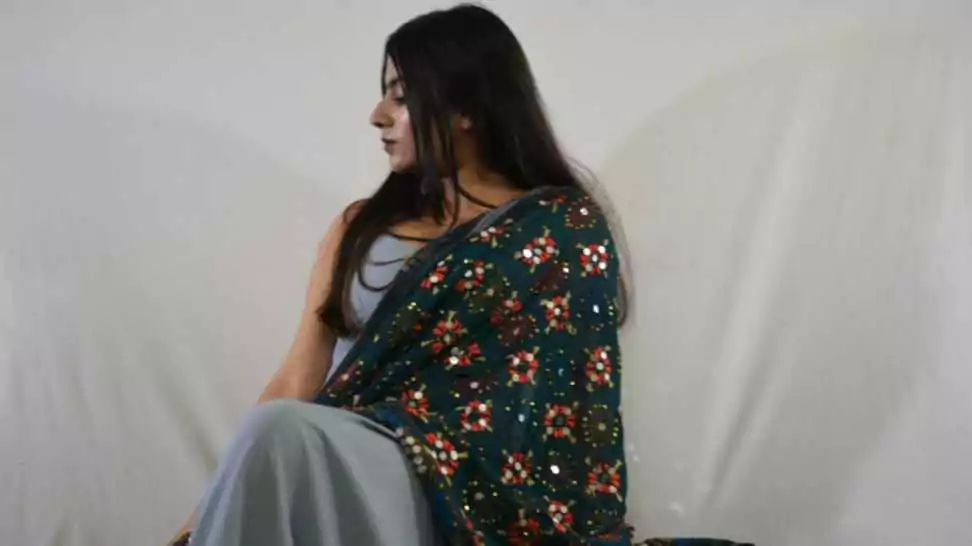How to Wear Punjabi Suit for Every Occasion?

The Punjabi suit, an epitome of grace and tradition, stands as a proud testament to the rich tapestry of Indian culture. Known for its vibrant colours, intricate designs, and effortless elegance, this attire has not only been a staple in Indian wardrobes but has also captured the imagination of fashion enthusiasts worldwide. In this comprehensive guide, we will delve into the heart of what makes the Punjabi suit a timeless piece of fashion.
At its core, the Punjabi suit is more than just a garment; it is a celebration of cultural heritage, a canvas for artistic expression, and a symbol of feminine strength. Its significance in Indian culture is unparalleled, resonating through the threads of history and the fabric of contemporary society alike. The versatility of the Punjabi suit has allowed it to transcend geographical boundaries, making it a beloved choice for women across the globe.
In the following sections, we will explore how to wear punjabi suit with elegance and style. From choosing the right fabric and cut to pairing it with the perfect shawl, we will cover all the nuances that make this attire so unique. Additionally, we will dive into the world of dupattas, exploring how these versatile pieces can add layers of sophistication and charm to your ensemble. Whether you’re a long-time admirer or a newcomer to this exquisite attire, this guide promises to equip you with all you need to know about wearing a Punjabi suit with confidence and flair.
1 Understanding the Punjabi Suit

At the heart of traditional Indian attire lies the Punjabi suit, a graceful ensemble that speaks volumes about the rich cultural heritage of India. This iconic outfit consists of three primary components: the Kameez, Salwar, and Dupatta, each playing a crucial role in creating its distinct look.
The Kameez
The Kameez is the upper garment, resembling a long shirt or tunic. Its length and style have evolved, ranging from thigh-length to knee-length. The design of the Kameez can vary significantly, featuring different types of embroidery, embellishments, and necklines, thereby allowing for a wide range of personal expression and fashion statements.
The Salwar
Complementing the Kameez is the Salwar, a pair of trousers that are typically loose-fitting and comfortable. The traditional Salwar gathers at the waist and is held up by a drawstring or elastic band. It tapers down at the ankles, providing a practical yet elegant silhouette. Modern adaptations have introduced various styles like Patiala Salwars, which are known for their pleats and voluminous look, and the more streamlined Churidar, which creates beautiful folds or ‘churis’ at the ankles.
The Dupatta
Completing the ensemble is the Dupatta, a long scarf that is draped over the shoulders or around the head. The Dupatta adds an element of modesty and grace to the outfit and is often a focal point for ornate designs and detailing. It can be styled in numerous ways, providing both functionality and a touch of finesse to the overall look.
The Punjabi suit has a storied history, with its origins rooted deeply in the cultural landscape of Punjab, a region known for its vibrant culture and artistic heritage. Over the years, the Punjabi suit has undergone various transformations, adapting to changing fashion trends while retaining its traditional essence. This adaptability has made it a popular choice not just for everyday wear but also for special occasions and festivities.
Today, the Punjabi suit is celebrated for its versatility and elegance. Designers have experimented with different fabrics, from luxurious silks to comfortable cottons, and from rich velvets to breezy chiffons. These fabrics, along with a wide range of colour palettes, patterns, and embroidery styles, have given rise to an endless array of designs. This allows every individual to find a Punjabi suit that not only reflects their style but also pays homage to an age-old tradition.

2 How to Wear Punjabi Suit - Step-by-Step Guide
Dressing in a Punjabi suit is an art form that blends tradition with personal style. This step-by-step guide will walk you through the process of selecting, coordinating, and accessorising your Punjabi suit, ensuring you look your best for any occasion.
Selecting the Right Size and Fit
- Measurements are Key: Ensure that your measurements for the bust, waist, hips, and length of the Kameez are accurate. A well-fitted suit flatters your body type without being too tight or too loose.
- Salwar Fit: Choose a Salwar style that complements your body shape. Patiala Salwars add volume and are ideal for slender frames, while straight-cut Salwars suit most body types.
- Comfort is Crucial: Especially for the Salwar, as it should allow ease of movement. The length of the Kameez should also be considered based on your height and personal preference.
Coordinating Colors and Patterns for Different Occasions
- Casual Wear: Opt for light, airy fabrics with minimalistic designs for daily wear. Pastel shades or simple prints work well.
- Festive Occasions: Bright colours and intricate patterns are perfect for festivals or weddings. Don’t shy away from vibrant hues and detailed embroidery.
- Formal Events: Choose elegant and understated designs. Monochromatic suits or those with subtle embellishments make a sophisticated statement.
Tips for Accessorizing
- Jewellery: Match your jewellery to the occasion. Jhumkas (traditional earrings) and bangles can enhance your look. For a modern twist, try minimalist or contemporary jewellery.
- Footwear: Juttis (traditional Punjabi footwear) are a classic choice. For a more modern look, opt for ballet flats or heels, depending on your comfort and the event.
- Handbags and Clutches: A stylish clutch can complement your Punjabi suit for formal events. For a casual look, go for a simple sling bag.
- Hairstyle and Makeup: These should align with the overall look. A sleek bun or loose waves can work well. Makeup can range from minimalistic for daywear to more dramatic for evenings.
3 How to Wear Shawl with Punjabi Suit?
A shawl is not just an accessory; it’s a statement piece that can significantly enhance the elegance of a Punjabi suit. In this section, we’ll explore the importance of shawls, their varieties, how to drape them effectively, and the occasions they are best suited for.
Importance of Shawls in Enhancing the Look of Punjabi Suits
- Adds Elegance: A shawl can elevate the overall look of a Punjabi suit, adding a touch of sophistication.
- Versatility: It can be styled in various ways to complement different types of Punjabi suits, making it a versatile addition to your wardrobe.
- Seasonal Adaptability: Shawls are particularly useful in cooler weather, offering warmth without compromising on style.
Different Types of Shawls and Their Unique Features
- Pashmina Shawls: Known for their softness and warmth, these are perfect for formal events and colder climates.
- Woollen Shawls: Ideal for winter wear, woollen shawls come in various patterns and are more casual.
- Embroidered Shawls: Often featuring intricate designs, these shawls are suited for festive occasions and can add a decorative element to your outfit.
- Silk Shawls: Lightweight and elegant, silk shawls are suitable for formal and semi-formal events.
Step-by-Step Instructions on Draping a Shawl with a Punjabi Suit
- Classic Drape: Simply drape the shawl over one shoulder, letting it fall gracefully across your back and over the opposite arm.
- Front Open Style: Let the shawl hang open on both sides of your arms, framing your Punjabi suit elegantly.
- Wrap Around: For colder weather, wrap the shawl around your neck and let the ends hang in front, providing warmth while showcasing the design of the shawl.
- Head Draping: In more traditional or religious settings, you can drape the shawl over your head, allowing one end to fall over your shoulder.
Occasions Suitable for Wearing a Shawl with a Punjabi Suit
- Weddings and Festive Occasions: Embroidered or silk shawls are perfect for adding a festive touch.
- Formal Events: Opt for Pashmina or elegantly draped silk shawls for a sophisticated look.
- Casual Outings: Woolen or simpler shawls can be styled casually for everyday wear.
- Religious Ceremonies: Using the shawl to cover your head can be a sign of respect in certain cultural and religious settings.

4 How to Wear Dupatta with Punjabi Suits
The Dupatta, a long scarf that is part of the Punjabi suit, is not just a piece of fabric but a symbol of grace and tradition. It completes the ensemble, adding layers of elegance and style. This section will explore the different ways to drape a Dupatta and provide tips for securing it comfortably.
The Role of the Dupatta in Completing the Punjabi Suit Ensemble
- Adds Dimension: The Dupatta brings colour, texture, and flow to the Punjabi suit, creating a harmonious look.
- Symbol of Modesty: Traditionally, the Dupatta is also a symbol of modesty and respect in many Indian cultures.
- Versatile Accessory: Depending on how it’s draped, the Dupatta can change the overall aesthetic of the outfit, from traditional to modern, or from formal to casual.
Different Styles of Draping a Dupatta for Various Looks
- Traditional Style: Drape the Dupatta over the head and let it fall over both shoulders. This style is often seen in religious or traditional settings.
- One-Shoulder Drape: For a modern look, drape the Dupatta over one shoulder. This style is simple yet chic, suitable for casual or semi-formal events.
- Front Flow Drape: Let the Dupatta hang from both shoulders in front, creating a flowy and elegant look. This works well for formal occasions.
- Neck Wrap Style: Wrap the Dupatta around the neck like a scarf for a contemporary and casual look. This style is practical and trendy.
Tips for Securing the Dupatta and Maintaining Comfort
- Use of Safety Pins: Secure the Dupatta to your outfit with safety pins to prevent it from slipping. Ensure that the pins are not visible and do not damage the fabric.
- Balancing Weight: Choose a Dupatta that is not too heavy for your outfit, as it should complement the suit without overpowering it.
- Adjusting Length: Make sure the Dupatta is not too long or too short for your height. It should fall gracefully and be easy to manage.
- Comfortable Fabrics: For everyday wear, opt for Dupattas made of lighter fabrics like chiffon or georgette for ease of movement.

5 Accessorising Your Punjabi Suit
The beauty of a Punjabi suit can be significantly enhanced by the right accessories. This section will guide you through selecting accessories, footwear, and the perfect hair and makeup styles to complement your Punjabi suit.
Choosing the Right Accessories (Earrings, Bangles, Necklaces)
- Earrings: Jhumkas or Chandbalis are traditional choices that add a touch of elegance. For a contemporary look, opt for studs or hoop earrings.
- Bangles: A set of colourful glass bangles or a few statement kadas (thick bangles) can enhance your attire. Mix and match colours and styles to suit the occasion.
- Necklaces: Choose a necklace based on the neckline of your Kameez. A choker works well with a high neck, while longer necklaces suit deeper necklines. For a minimalist look, a simple pendant can add a touch of sophistication.
Footwear Options to Complement Your Punjabi Suit
- Traditional Look: Juttis or Mojaris, traditional Indian footwear, are a perfect match for Punjabi suits. They come in various designs, from heavily embroidered to simple and elegant.
- Modern Twist: For a more contemporary style, ballet flats or strappy sandals can offer comfort and style. Heels can be worn for a formal look, but ensure they complement the style and colour of your suit.
Suggestions for Hair and Makeup Styles That Go Well with Punjabi Suits
- Hair Styles: Your hairstyle should match the tone of your outfit and the occasion. A sleek bun or a braided updo is elegant for formal events. Loose waves or a simple ponytail can be ideal for a casual look.
- Makeup: Keep your makeup in harmony with your outfit. For daytime events, a natural look with subtle eye makeup and nude lipstick can be perfect. For evening occasions, you can opt for a more dramatic look with bolder lips and smokey eyes.
6 Care and Maintenance of Punjabi Suits
Your Punjabi suit is not just a piece of clothing; it’s a cultural and artistic treasure. To ensure it stays vibrant and elegant for years to come, proper care and maintenance are essential. This section will provide you with the best practices for washing, storing, and preserving your Punjabi suits.
Best Practices for Washing Punjabi Suits
- Read the Care Label: Always check the care label on your Punjabi suit for specific washing instructions. Some suits may be dry clean only, while others can be hand-washed or machine-washed.
- Hand Washing: If hand washing is recommended, use cold or lukewarm water with a gentle detergent. Avoid harsh detergents and bleach, as they can damage the fabric and colours.
- Delicate Cycle: If you choose to machine wash, use a delicate or gentle cycle with a laundry bag to protect the embroidery and delicate details.
- Avoid Soaking: Do not soak your Punjabi suit for extended periods, as this can cause colours to bleed or fade.
- Drying: After washing, gently squeeze out excess water and hang the suit to dry in the shade. Avoid direct sunlight, as it can cause colours to fade.
Tips for Maintaining Color and Fabric Quality
- Separate Colours: When washing, separate your coloured Punjabi suits from whites to prevent colour transfer.
- Use Fabric Conditioner: Adding a fabric conditioner can help maintain the softness and quality of the fabric.
- Ironing: Iron your Punjabi suit on a low to medium heat setting, preferably, on the reverse side to protect the embroidery or embellishments.
- Storage: Store your Punjabi suits in a cool, dry place away from direct sunlight. Use breathable garment bags or covers to protect them from dust.
- Avoid Hangers: Avoid hanging heavy suits for extended periods, as it can cause stretching. Instead, fold them neatly.
7 Wrapping Up
As you embark on your journey of wearing Punjabi suits, remember that fashion is not just about following trends; it’s about self-expression. Your Punjabi suit can be a canvas for your unique style, allowing you to experiment with colours, accessories, and draping styles. Whether you’re attending a festive celebration, a formal event, or simply enjoying a casual outing, your Punjabi suit can reflect your personality and heritage.
So, don’t hesitate to make it your own. Embrace the beauty of tradition, and let your Punjabi suit be a personal fashion statement that celebrates culture and individuality. As you wear it with confidence and grace, you not only honour a rich heritage but also contribute to the timeless legacy of the Punjabi suit.
Community Q&A
About This Article
This article has been viewed 86 times.



